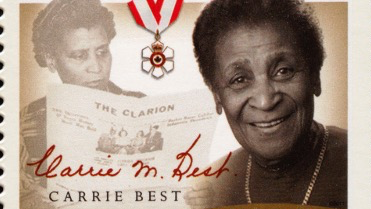
Source- Flickr
Marie-Joseph Angélique, born around 1705 in Madeira, Portugal, is a significant figure in Canadian history, remembered for her resistance against enslavement in colonial New France. As a Black woman enslaved for much of her life, her story has become a powerful symbol of the struggle for freedom and the harsh realities of slavery in early Canada.
Early Life and Enslavement
Little is known about Angélique’s early years, but she was likely enslaved in Portugal before being sold multiple times. By her early teens, she was purchased by Flemish merchant Nichus Block and transported to New England. In 1725, at around 20 years old, she was sold to François Poulin de Francheville, a French merchant in Montréal. For the next nine years, she lived as a domestic slave in the Francheville household. During this time, she had three children, all of whom died in infancy. Their father was Jacques César, a Madagascar-born slave owned by a family friend. Angélique was likely forced into this union by her enslavers. However, she later found love with Claude Thibault, a French indentured labourer, with whom she attempted to escape enslavement.
A Defiant Spirit and Escape Attempt
When Francheville died in 1733, Angélique was inherited by his widow, Thérèse de Couagne, who renamed her after her deceased daughter. That same year, Angélique requested her freedom but was denied. She became increasingly defiant, openly resisting her enslavers and making threats. Her rebellious nature made her a notorious figure in the household. In early 1734, Angélique learned that she was to be sold to François-Étienne Cugnet, a merchant in Québec City, for 600 pounds of gunpowder. Fearing further enslavement in the West Indies, she threatened to set fire to her mistress’s house rather than endure further misery.
Determined to escape, Angélique and Thibault fled together, setting fire to a bed at Alexis Monière’s home, where they had been staying. They attempted to reach New England to find passage back to Europe but were captured after two weeks and brought back to Montréal. Angélique remained outspoken, continuing to declare that she would rather burn her mistress’s home than remain enslaved.
The Montréal Fire and Trial
On April 10, 1734, a massive fire engulfed Montréal’s merchant quarter, destroying 46 buildings, including the convent and hospital of the Hôtel-Dieu de Montréal. The next day, Angélique was arrested and charged with arson. Witnesses claimed she had previously threatened to set fires and was seen carrying a pot of live coals before the fire broke out. Under the inquisitorial legal system of the time, where the burden of proof fell on the accused, Angélique was presumed guilty. After a six-week trial, she was convicted and sentenced to death.
Torture, Execution, and Legacy
On June 21, 1734, Angélique was subjected to severe torture, during which she confessed to setting the fire but refused to implicate Thibault. She was publicly hanged, her body burned, and her ashes scattered as a warning to others. Whether or not she truly set the fire remains debated, but as a Black enslaved woman, she was an easy scapegoat for colonial authorities.
Despite her tragic fate, Marie-Joseph Angélique’s legacy endures as a symbol of defiance against oppression. In 2012, Montréal named a public square, Place Marie-Josèphe Angélique, in her honour. Her story was also dramatized in Lorena Gale’s 1995 play Angélique, and in 2025, Canada Post will release a commemorative stamp celebrating her contribution to history. Today, she stands as a beacon of Black resistance, reminding the world of the fight for freedom and justice.



